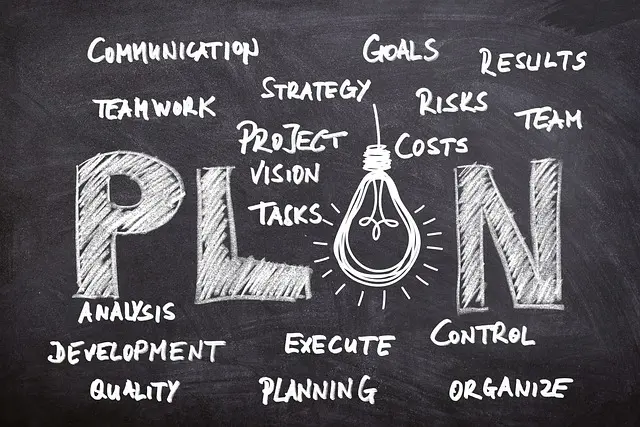
The path to securing scholarships can be a journey of peaks and valleys. It’s a road where setbacks and rejections often stand as daunting roadblocks. Yet, these moments of disappointment need not be the end of your quest but the stepping stones toward resilience and eventual success. This guide is your companion through the emotional labyrinth of handling setbacks and rejections during the scholarship application process. We will equip you with the tools to cope, adapt, and use these experiences as lessons in persistence and determination. After all, in the world of scholarships, it’s not just about how you handle success but also how you rise from setbacks.
Understanding Rejection
Rejection hurts, but it doesn’t have to define us or limit our potential. Nobody likes to be rejected, but it’s important to remember that no matter how much it stings at the moment, it doesn’t have to hold us back. Keeping a positive mindset and spotlighting the lessons instead of the pain is essential. Right now, it might seem like failure, but it’s really just a learning curve.
The best way to get through rejection is to see it as an opportunity to grow. Everyone experiences rejection in life, and it helps us become more resilient and better able to cope in the future. So, if you’re feeling rejected, reframe it and use it as an opportunity to learn and grow. By not focusing on the rejection but on the potential for self-improvement, we can start to let go of the hurt and take charge of our future.
Reframing Your Mindset
It’s natural to experience a moment of discouragement and frustration when you get a rejection letter. However, it’s essential to shift your mindset if you want to be successful in the future. Try and focus on the learning experience and ask yourself questions like, “What did I learn from this process, and how can I use it in the future?” Reflecting on the experience indelibly is an important step when reframing your mindset from discouragement to potential optimism.
Once you have taken the time to process your experience properly, make sure you mentally distance yourself from it. This way, you are keeping your options open. It’s healthy to let yourself mourn the passing of a goal you had set for yourself, but it’s equally important to know when enough is enough and to move on to other productive opportunities. Allowing time to move forward properly is key to leading an optimistic life.
Developing Resilience
Developing resilience is an essential step in conquering your feelings of rejection. It can be challenging to look at things positively when your application for a scholarship or position gets turned down. However, taking a step back and reframing the situation is essential. Instead of catastrophizing, practice critical thought and understanding. Take a mindful moment to acknowledge that things could have gone differently, that luck and privileges may have played a part, and that there’s nothing wrong with not getting something you wanted.
On the flip side, taking ownership of your journey is essential. Taking responsibility allows you to challenge yourself to learn from the experience, grow, and continue striving for excellence whenever there’s a setback. Recognize your work, talents, and dedication. Work to cultivate an internal belief that beyond luck and privilege, you need to earn success through your hard work and determination.
Making an Action Plan
Once you have identified your areas of concern, the next step is creating an action plan. This should serve as a guide that outlines the steps you must take to reach your goals. An effective plan should cover both short-term and long-term goals. Start by taking small steps and gradually build upon that. Schedule reviews to assess how you are doing and adjust the plan according to your progress. Breaking large goals into manageable steps can seem overwhelming. It is important to remember that even small accomplishments can make a big difference when achieving success. It might feel difficult at first, but planning every step needed to reach your goal makes it easier to stay on track.
Refining Your Scholarship Application
If you’re looking to apply for a scholarship, you must submit a strong application. Make sure everything is polished and prepared to perfection. Start by revising your essay, ensuring all grammar, punctuation, and spelling are correct. Double-check the entire draft to make sure nothing is missed. After you have a complete and correct essay draft, review all requirements needed for the application. Review your essay again and adjust it to ensure it meets all requirements and is a perfect fit for the scholarship. Submit your essay with all necessary paperwork attached, and double-check that all the correct documents are included in the package.
Put the same effort and attention to detail into the rest of your application, ensuring you submit all paperwork on time. Make sure your supplemental materials are relevant and impressive. Highlight any achievements or special qualities the scholarship committee should note. Personalize each part of your application and include any necessary supplemental materials to give yourself the highest chance of winning. Your hard work and dedication will pay off in the end!
Conclusion
As you navigate the tumultuous terrain of scholarship applications, remember that setbacks and rejections are not the end but a pause in your journey. By applying the strategies and insights shared in this guide, you can turn these challenging moments into opportunities for growth and resilience. Every ‘no’ can be a stepping stone toward the ‘yes’ you seek. Embrace your setbacks as the valuable experiences that they are, and let them shape your path toward future success. You’re not defined by the rejections; you’re defined by your unwavering determination to rise above them. So, keep your head high your spirits higher, and let setbacks be the fuel for your journey towards the scholarships that await your unique potential.












